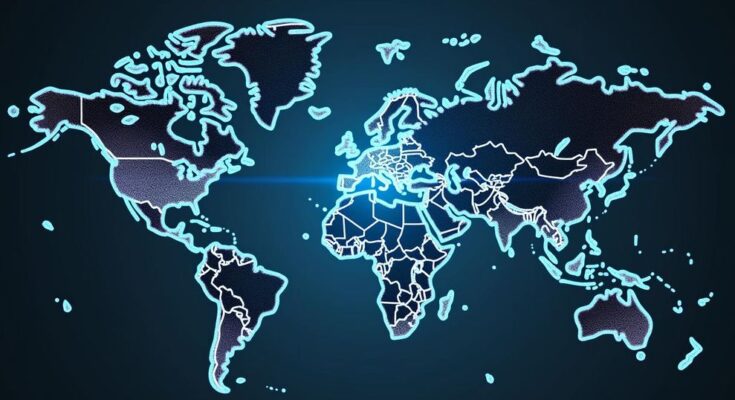The digital divide signifies the disparity in access to the Internet and technology worldwide, impacting over 2.9 billion people. Major differences exist based on geography, gender, and socio-economic conditions. The divide manifests through access, use, and quality of use gaps, leading to consequences like educational barriers and social isolation. Various initiatives aim to bridge this gap, emphasizing the need for digital equity in an increasingly connected world.
The phenomenon known as the digital divide showcases the profound inequality in access to Information and Communication Technologies (ICT) across the globe. While technological advances like the Internet have propelled societies forward, over 2.9 billion people remain disconnected from this vital resource, predominantly affecting regions such as Africa, where only 43.1% of its populous is online, compared to 88.4% of Europeans and 93.4% of Americans. This gap is not only geographical but also social, with significant impacts based on gender and education levels. Remote working and online education became lifelines during the pandemic; however, not everyone had access. The digital divide encompasses three important aspects: the access divide, the use divide, and the quality of use gap. Together, these reinforce existing inequalities, leading to social and economic isolation for millions. The consequences of this divide ripple through society, creating barriers to education, employment opportunities, and communication, especially for marginalized groups like women, who are disproportionately affected. Addressing these disparities is critical, with various strategies and initiatives emerging globally. Digital literacy programs and initiatives like the Alliance for Affordable Internet aim to remedy this situation by fostering access and education, while innovative projects, such as Starlink’s satellite internet, promise to bridge these gaps even further. This ongoing challenge remains a pivotal issue as the world navigates the complexities of an increasingly digital landscape.
The digital divide refers to the inequality experienced by individuals in access to technology and the Internet, heavily influenced by socio-economic conditions, geographical barriers, and educational disparities. This phenomenon has drawn attention, especially during the COVID-19 pandemic, which highlighted the essential role of the Internet for education and work. Institutions like the International Telecommunication Union (ITU) have documented the staggering figures of unconnected populations and emphasized the disparities across different regions of the world. Understanding the nuances of this divide reveals both its causes—such as high costs and lacking infrastructure—and its profound consequences, which resonate through social, economic, and educational domains.
In summary, the digital divide starkly illustrates the inequalities faced by billions in accessing the Internet and its benefits. Addressing this divide is critical to fostering a more inclusive world where technology serves as a bridge rather than a barrier. The ongoing efforts to enhance digital literacy, improve accessibility, and lower costs are crucial in combatting the deep-seated inequalities caused by this divide. Without concerted action, the digital chasm will continue to perpetuate social and economic disparities, hindering progress for underserved communities worldwide.
Original Source: www.iberdrola.com



